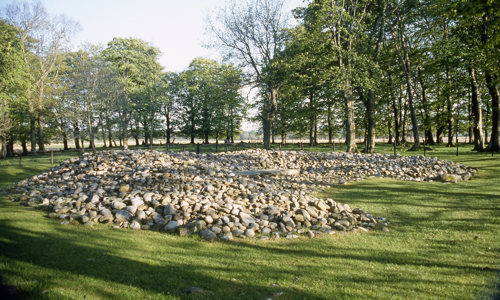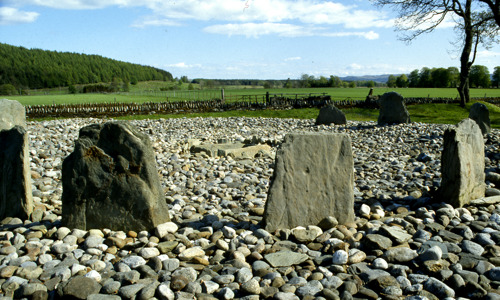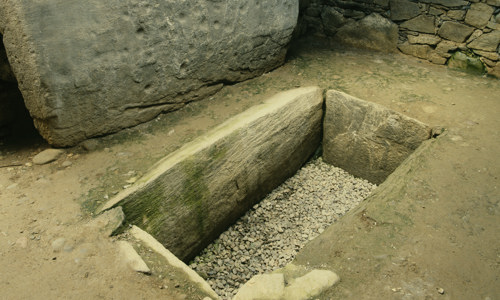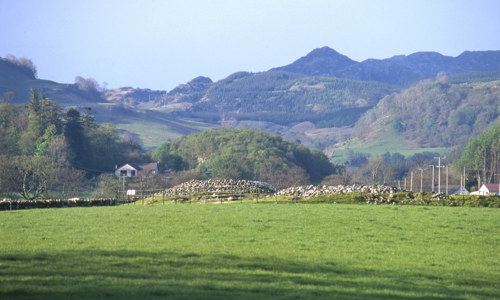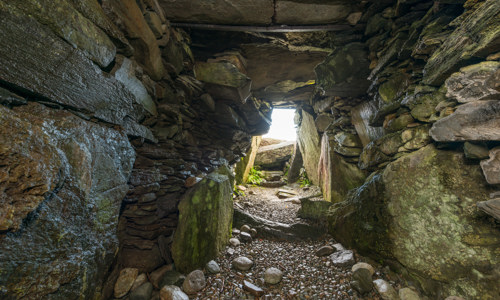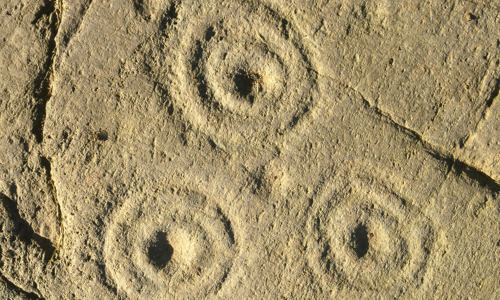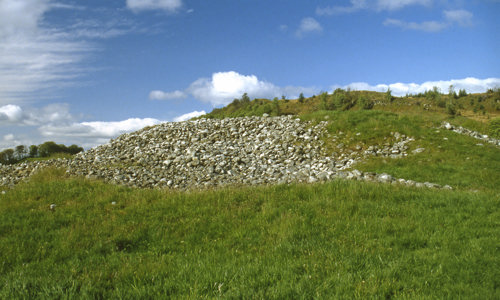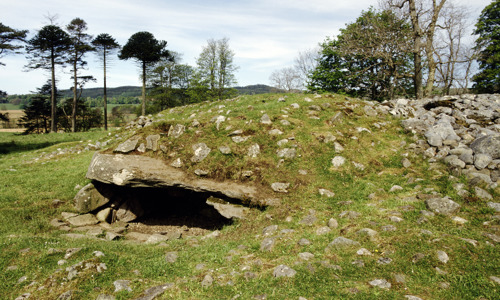History
We know very little about Neolithic and Bronze Age settlement around Kilmartin Glen, or about how and why these rock-art sites were used. They were probably carved sometime between 3500 and 2500 BC. The carvings at Ballygowan do not overlap or overlie each other, which suggests they were executed during the same period.
One of the most distinctive features at Ballygowan is the horseshoe-shaped ring around one of the cup marks. The name Ballygowan means ‘settlement of the blacksmith’ which may provide clues to the history and use of the area.
Along with the horseshoe carvings, at Ballygowan we can see:
- more than 43 plain cup marks, some of them modified fissures or cracks
- cup and ring marks
- several lengths of grooving and gutters
Complex rock art sites tend to lie closer to the valley floor, while simpler carvings are found on high ground. Ballygowan, on a higher slope, presents some of the most simple art in the area. These different sites may have been intended for different audiences.
What do the symbols mean?
We can only speculate about the meanings Kilmartin Glen’s prehistoric inhabitants attached to these markings, and why they carved them. The art is mostly abstract – there are no animal or human figures, and few indicators of function or meaning.
A prehistoric landscape
A rich prehistoric landscape survives in Kilmartin Glen, providing a tantalising insight into its prehistoric population. The surviving rock art along the glen is remarkable for the number of elaborately carved outcrops, the style of and extent of the carvings, and their close association with other prehistoric monuments. No other place in Scotland has such a concentration of prehistoric carved stone surfaces, and Neolithic and Bronze Age monuments.
Other carved rock outcrops around Kilmartin Glen include:
Other monuments include:


